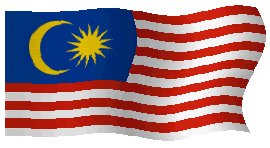



The Citizen's Band (CB) radio system is a short range radio communications between individuals on a selection of 40 channels within the 27-MHz (11 m) band. CB radio has an specific set of standardized codes that have become iconic phrases known as Code10.
The CB radio can reach up to 4 or 5 miles, depending on the weather and type of terrain in the area. This is called "SHORT SKIP" but during good propagation the signal may travel far and this is known as "LONG SKIP". Band opening may varies from few minutes to hours.
The CB radio service is distinct from FRS or Amateur ("HAM") radio. In many countries, CB does not require a license and, unlike Amateur Radio, it may be used for business as well as personal communications. Like many other two-way radio services, Citizens' Band channels are shared by many users. Only one station may transmit at a time. Other stations must listen and wait for the shared channel to be available. Several countries have created similar radio services, with varying requirements for licensing and differing technical standards. In Malaysia CB are allocated on 27 MHZ and 477 MHZ. Any persons who wish to operates CB Radio must get the Typed Approved model.
Refer To:
 A Mosaic of Cassiopeia
A Mosaic of Cassiopeia
This mosaic of images from the Wide-Field Infrared Survey Explore, or WISE, in the constellation of Cassiopeia contains a large star-forming nebula within...
STS-131 News Conference and Briefings TodayTue, 09 Mar 2010 10:01:56 PM UTC+0800
Today at NASA's Johnson Space Center in Houston, the STS-131 astronauts will conduct an integrated ascent simulation before participating in their preflight news conference, airing on NASA TV at 2 p.m. EST. Preflight briefings also will air throughout the day on NASA TV, available on the Web at: www.nasa.gov/ntv. Preparation of space shuttle Discovery continues on Launch Pad 39A at NASA's Kennedy Space Center in Florida, where today technicians are getting ready to service the shuttle's hypergolic system.
 Preparations for the next mission to the International Space Station continue as technicians working on Discovery at the pad calibrate the inertial measurement unit and test the camera located on the external fuel tank. › Shuttle Section
Preparations for the next mission to the International Space Station continue as technicians working on Discovery at the pad calibrate the inertial measurement unit and test the camera located on the external fuel tank. › Shuttle Section
In the White Room of Launch Pad 39A at NASA's Kennedy Space Center in Florida, the members of space shuttle Discovery's STS-131 crew take time out from their training for a group portrait. Kneeling, from left, are Commander Alan Poindexter, Pilot James P. Dutton Jr., and Mission Specialist Naoko Yamazaki of the Japan Aerospace Exploration Agency. Standing, from left, are Mission Specialists Clayton Anderson, Dorothy Metcalf-Lindenburger, Rick Mastracchio and Stephanie Wilson. Image credit: NASA/Kim Shiflett › View larger image › Meet the STS-131 Crew
Discovery and Crew Prepare for STS-131 MissionCommander Alan Poindexter is set to lead the STS-131 mission to the International Space Station aboard space shuttle Discovery. Joining Poindexter will be Pilot Jim Dutton and Mission Specialists Rick Mastracchio, Clay Anderson, Dorothy Metcalf-Lindenburger, Stephanie Wilson and Naoko Yamazaki of the Japan Aerospace Exploration Agency. Discovery will carry a multi-purpose logistics module filled with science racks for the laboratories aboard the station. The mission has three planned spacewalks, with work to include replacing an ammonia tank assembly, retrieving a Japanese experiment from the station’s exterior, and switching out a rate gyro assembly on the S0 segment of the station’s truss structure.STS-131 will be the 33rd shuttle mission to the station.Additional Resources › STS-130 Mission Summary (448 Kb PDF)
-->› Reusable Solid Rocket Motor and Solid Rocket Boosters
Orbiter Status› About the Orbiters
ABOUT AMATEUR RADIO
Amateur radio service is defined in the Communication and Multimedia (Spectrum) Regulations 2000 as a radiocommunications service (covering both terrestrial and satellite) in which a station is used for the purpose of self traning, intercommunication and technical investigations carried out by authorized persons who are interested in radio technique solely with a personal aim and without any pecuniary interest.
AMATEUR RADIO OPERATOR'S CERTIFICATE
Regulation 27(1) of the Communications and Multimedia (Technical Standards) Regulations 2000 states that no person shall undertake or conduct any activity in designated skil area unless that person is certified. Amateur radio operator has been gazetted as a designated skill area category under the regulation, hence to operate an amateur radio station a person needs to have an appropriate proficiency and skill i.e. certified in this area.
INTERFERENCE
Please ensure that the radio transmision does not cause interference to any other radio services. Regulation 15(1) of the Communications and Multemedia (Technical Standards) Regulations 2000 states that no person shall intentionally design, install, operate, maintain or modify any communications equipment in a manner is likely to cause interference with, impairment, mulfunction of, or harm to any communications equipment or any other equipment.
Regulation 15(2) of the regulation denotes that a person who contravenes this regulation commits an offence and shall, on conviction, be liable to a fine not exceeding three hundred thousand ringgit (RM 300,000.00) or to imprisonment for a term of not exceeding three years or to both.
To eliminate the potential of interferences, the following procedures must be followed strictly:-
a) Ensure that suffient equipment, tools and test gear is available and can used to monitor and verify that your transmission does not cause any interference to other radio services.
b) You must responsible if your amateur radio is found to be the caused of interference. Immediate remedy action must be taken to rectify the problems in case of interference.
c) Ensure that the transmission do not exceed the level of over deviation.
d) Ensure that the radiated energy is always within the narrowest posible frequency bands for any class of emission in use.
e) The radiation of harmonics and spurious emissions should be suppressed to minimize interference.
Historical Description of Amateur Radio: From the Encyclopedia Britannica:-
Interest in amateur radio arose around the turn of the century, shortly after the Italian inventor Guglielmo Marconi successfully sent the first transatlantic wireless signal in 1901. The interference of amateur broadcasts with commercial and military transmissions led to the institution of government control in 1911. After World War I, amateurs became active in radio experimentation, contributing to developments in long-distance broadcasting and becoming the first radio operators successfully to exploit the upper medium-frequency and lower high-frequency radio bands. Over the years, amateur radio operators have also provided emergency communications during forest fires, floods, hurricanes, and other disasters. They serve as an important link between stricken communities and the outside world until normal communications are reestablished.Amateur radio operators in the United States are subject to international and federal regulations. There are five classes of licenses. Competence in the use of the International Morse Code and a knowledge of radio theory and regulation are required to obtain the advanced-level licenses. Amateur radio is allocated frequencies at the extreme high-frequency end of the medium-wave band, five groups of frequencies in the shortwave band, two groups in the veryhigh-frequency band, three in the ultrahigh-frequency band, and seven in the superhigh-frequency band for telegraphic and telephonic communication using amplitude and frequency modulation. There are restrictions on the power of the transmitters, and certain of the frequencies must be shared with due regard for the needs of other users.





























































